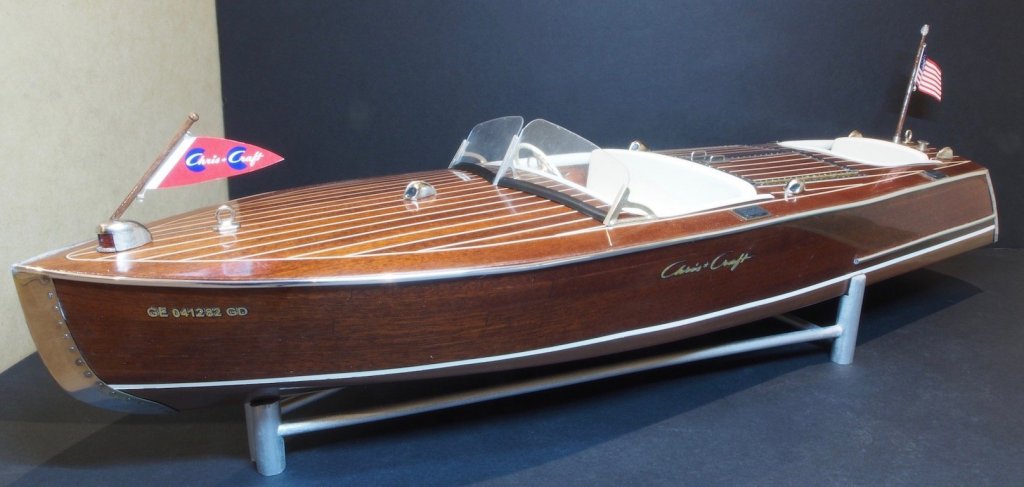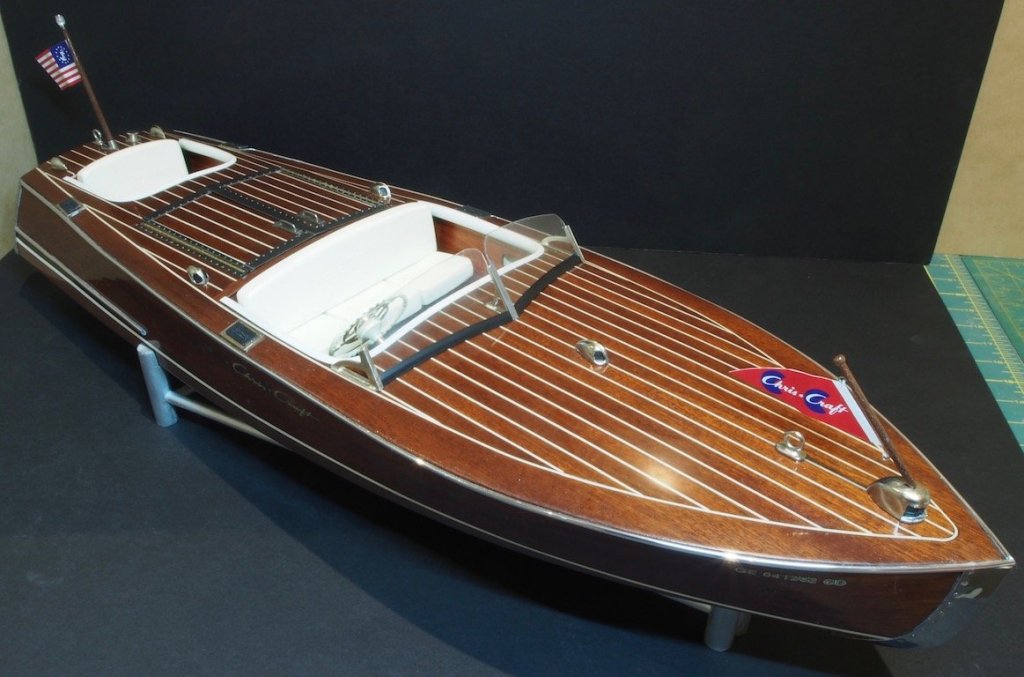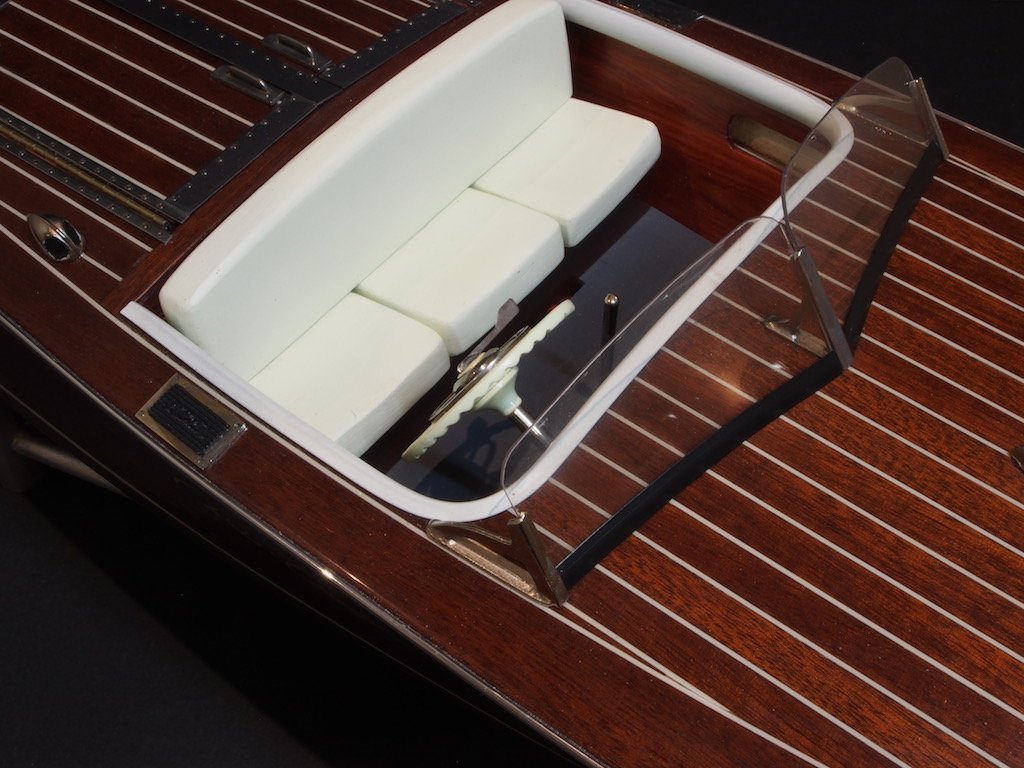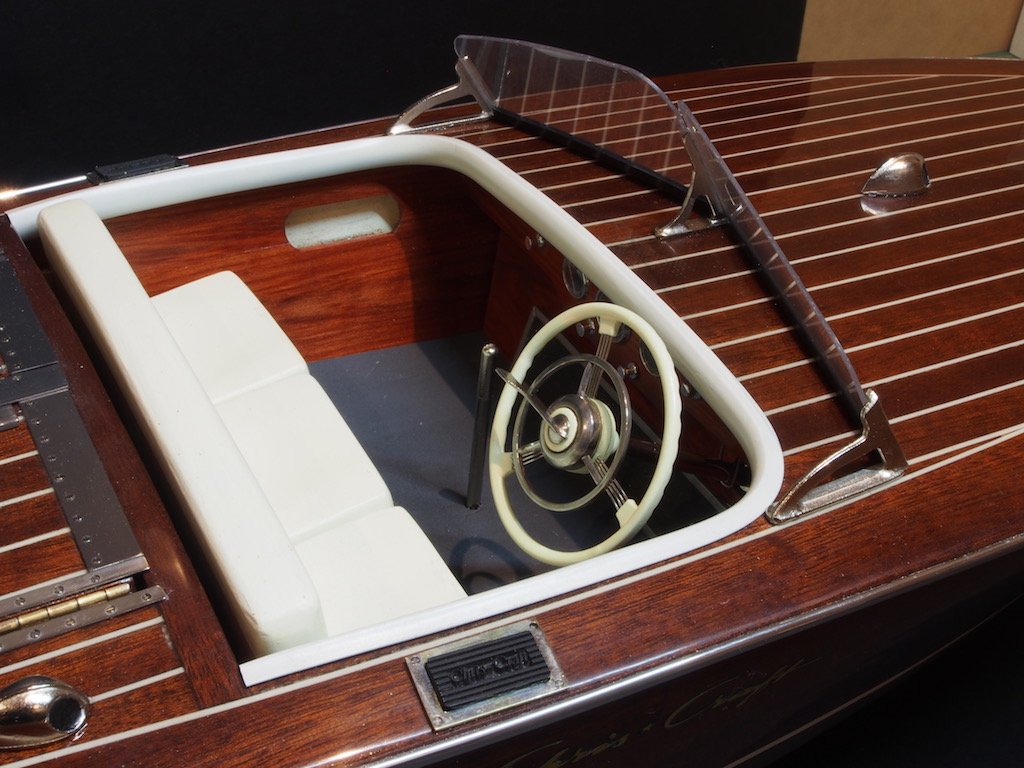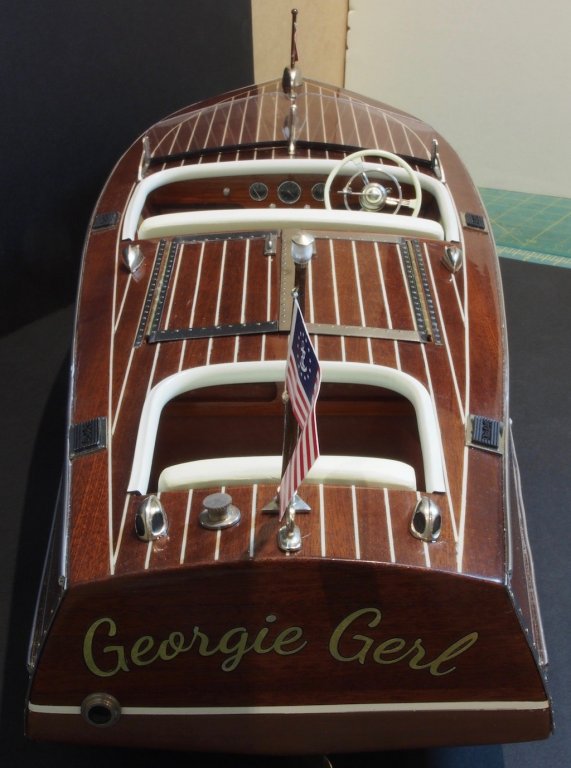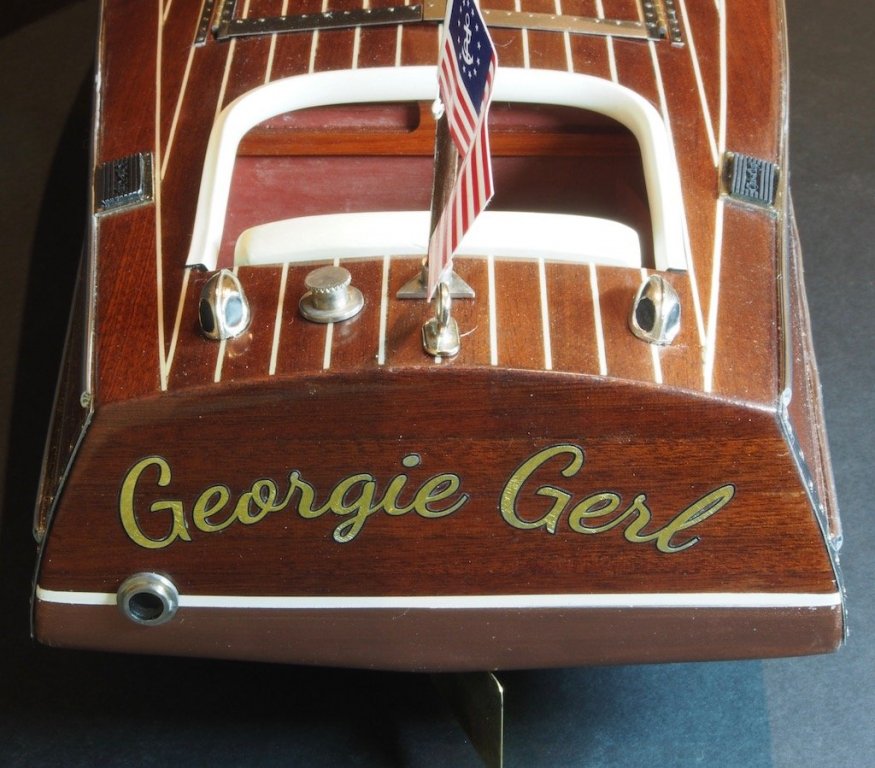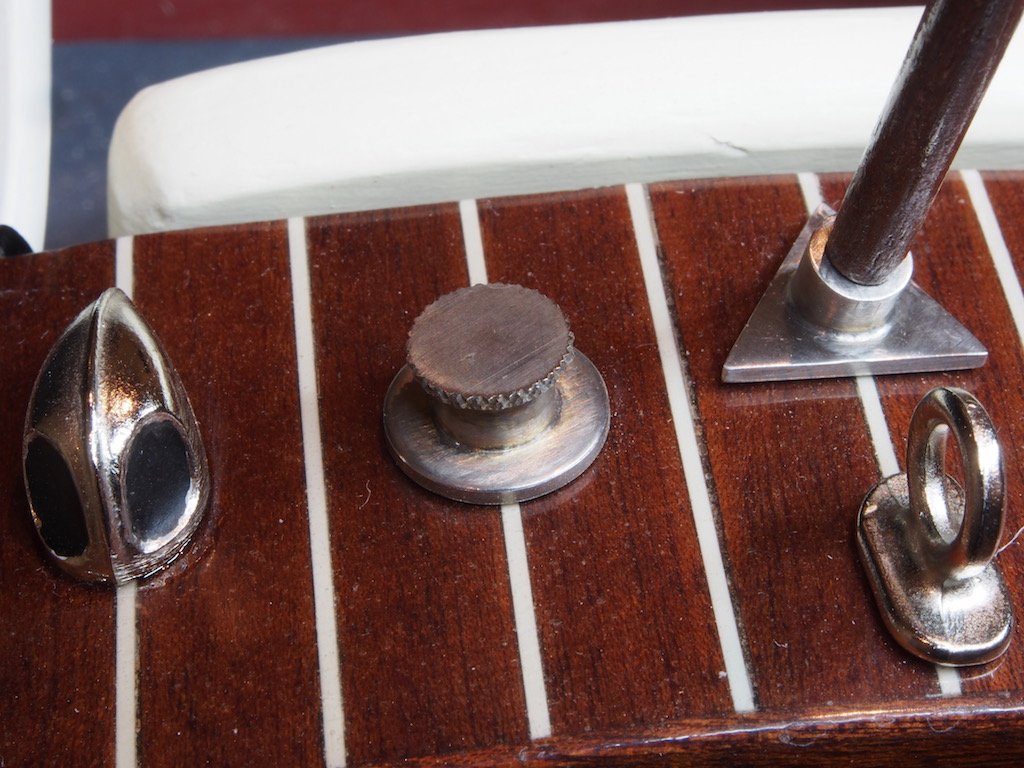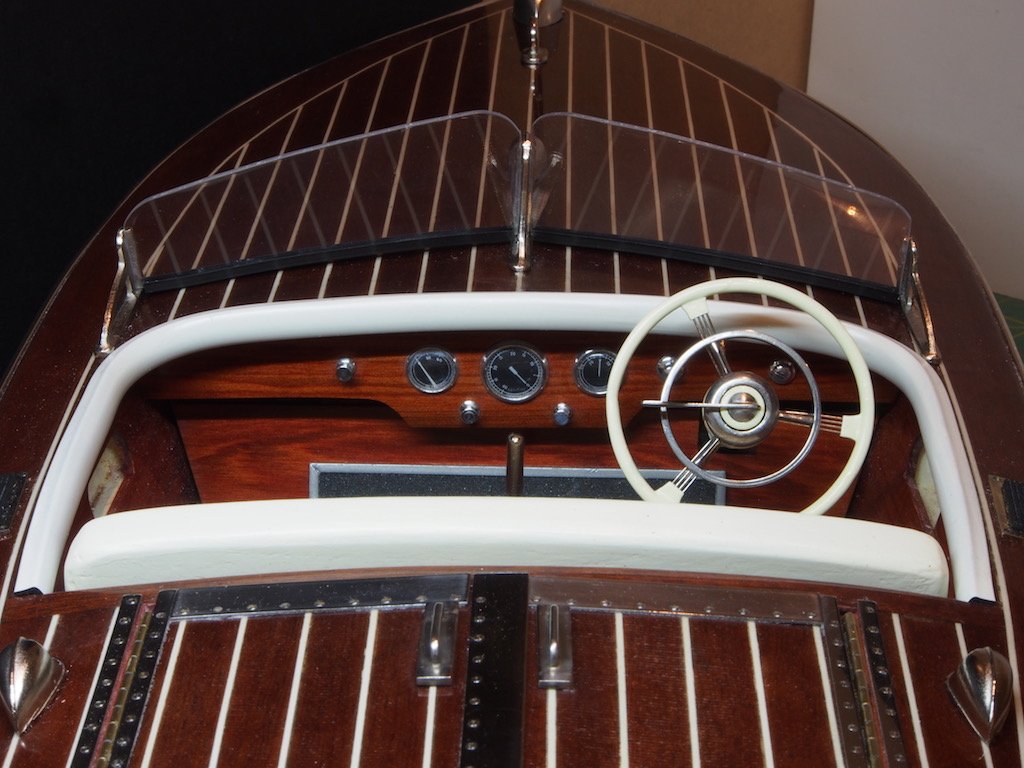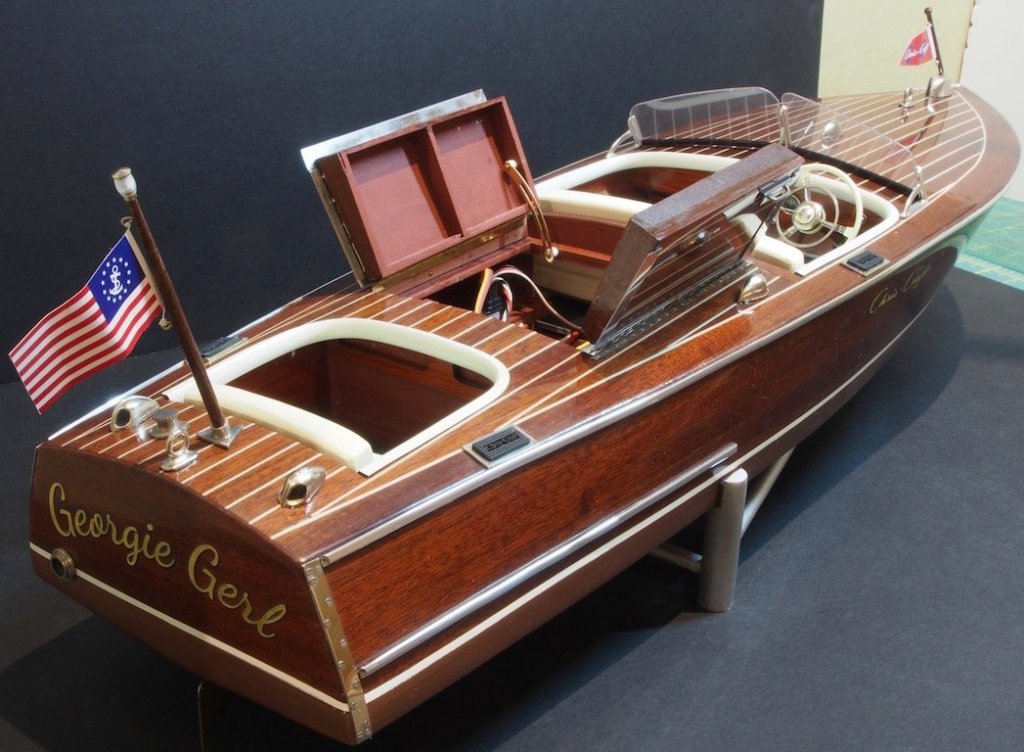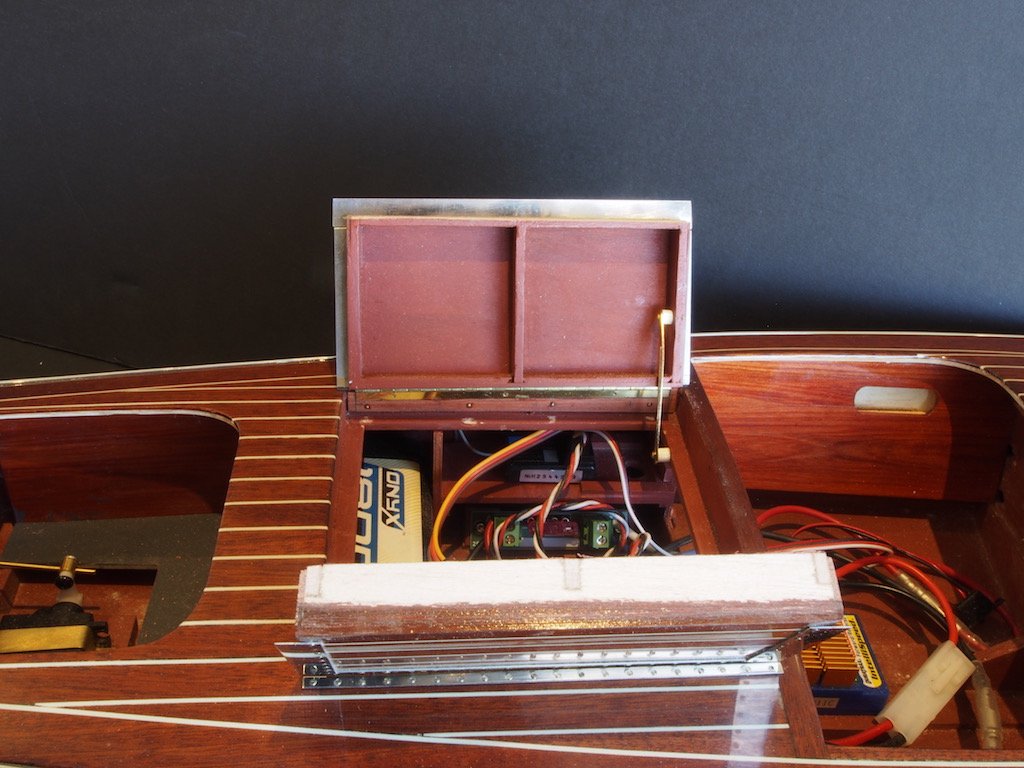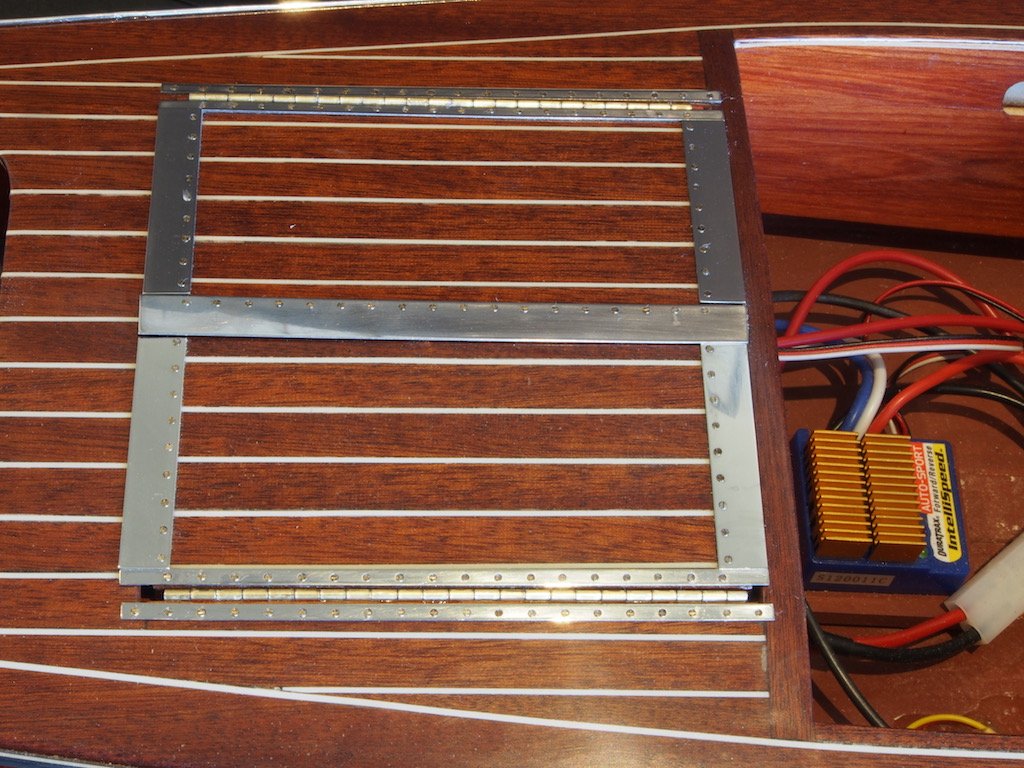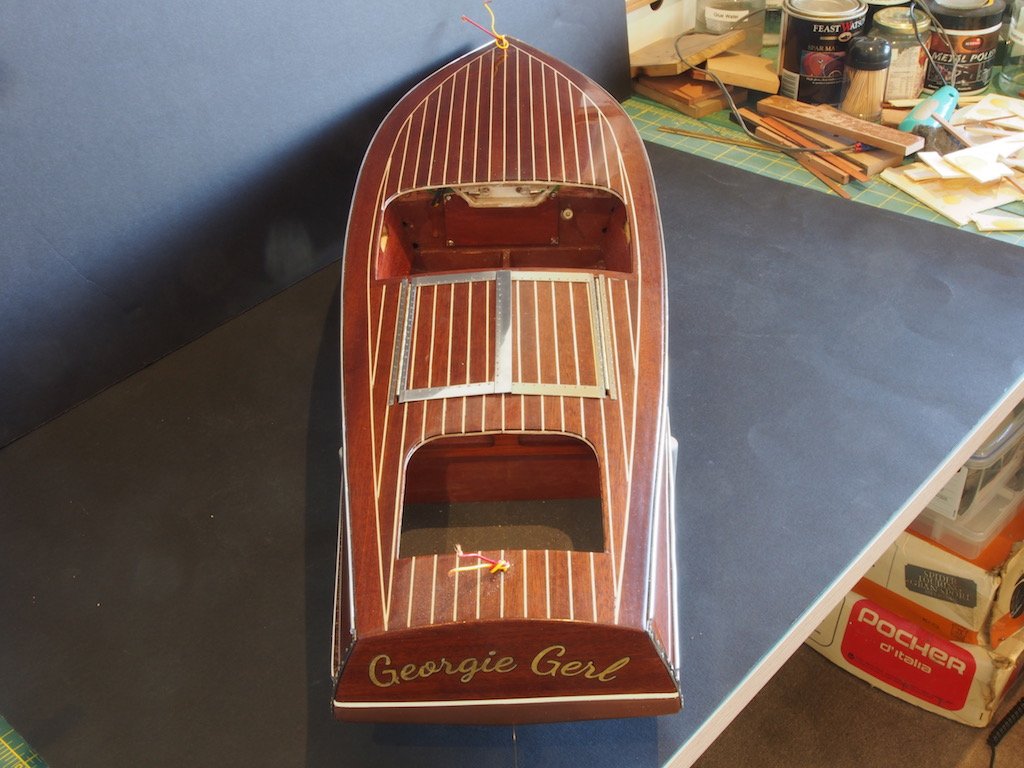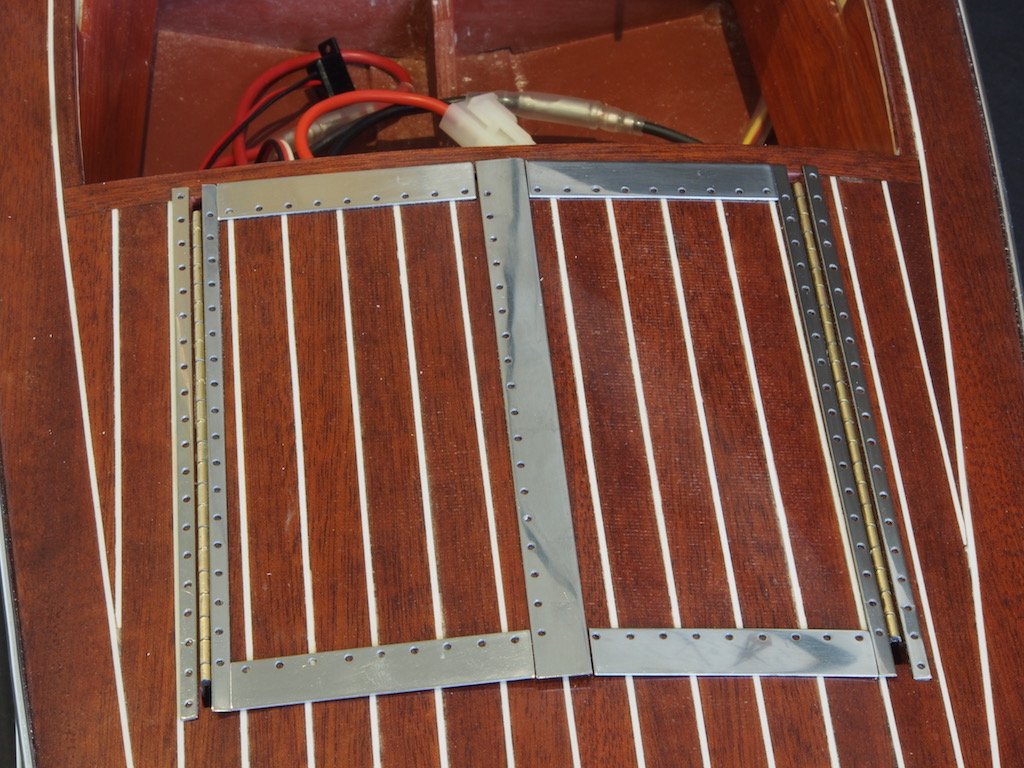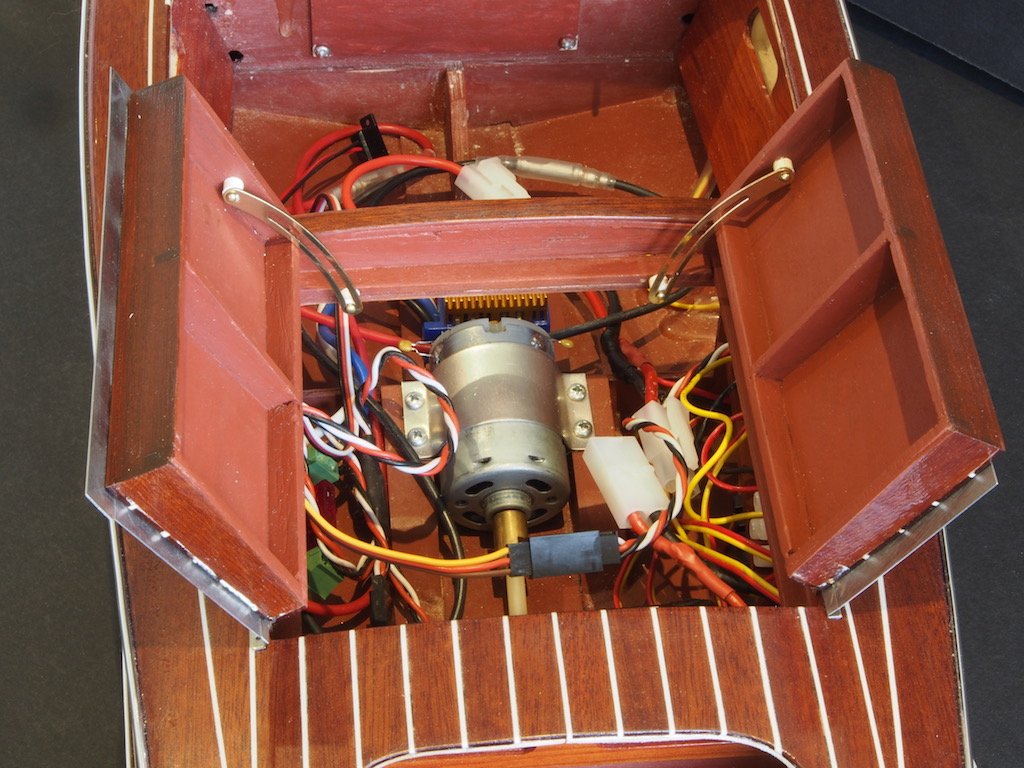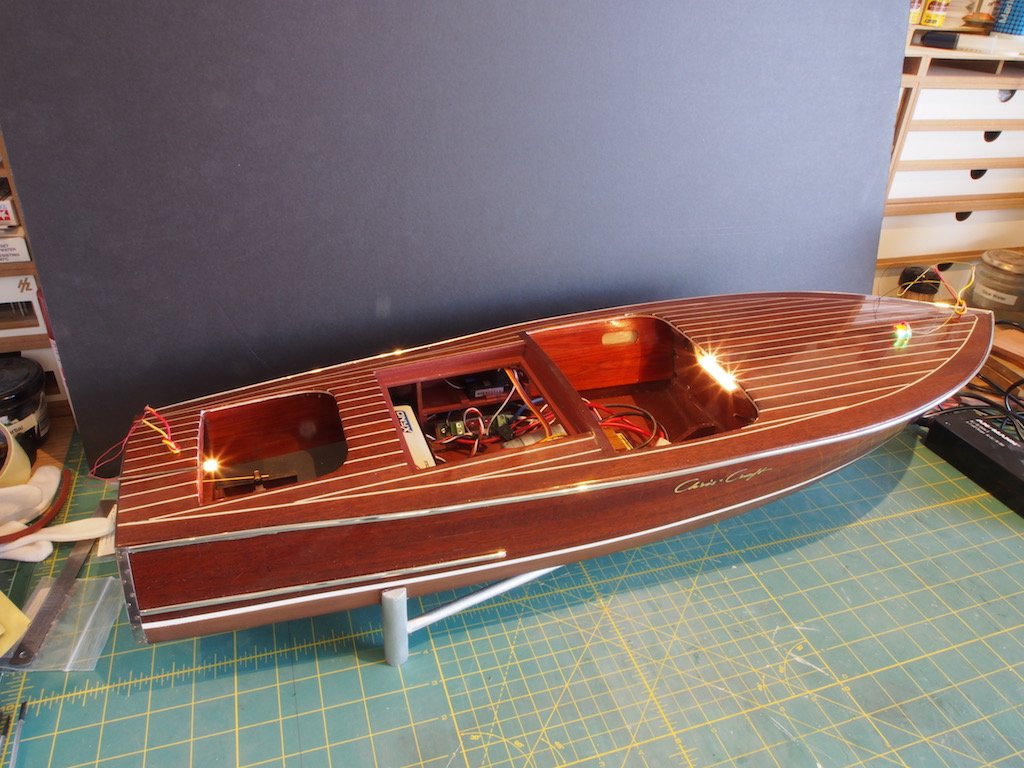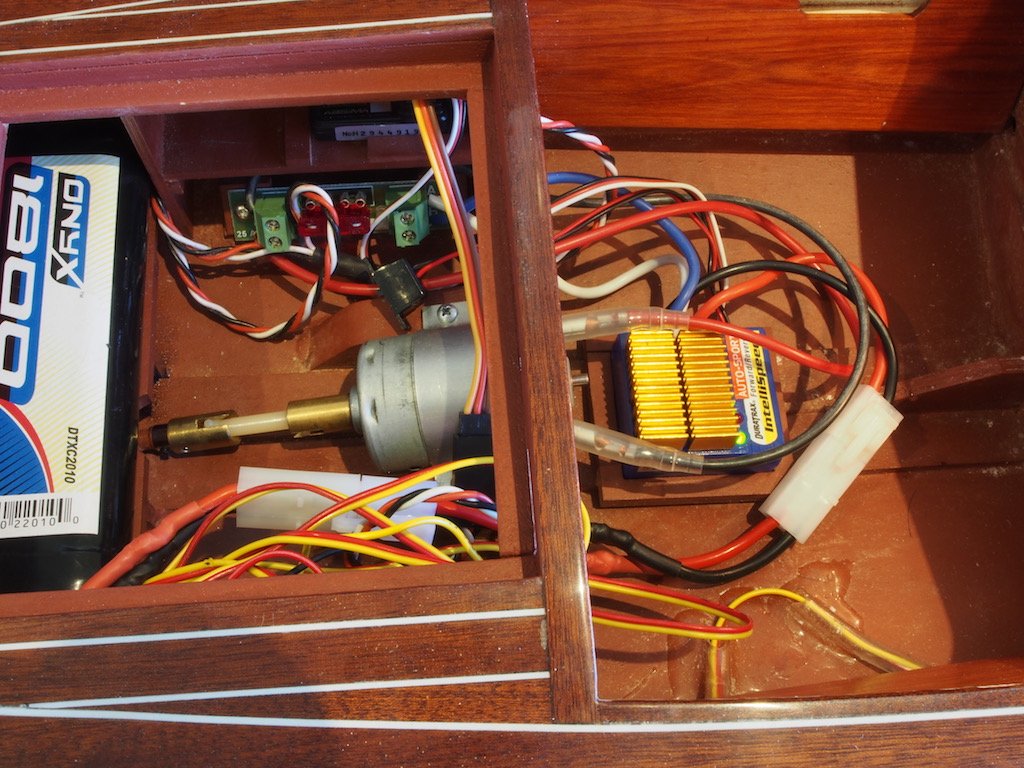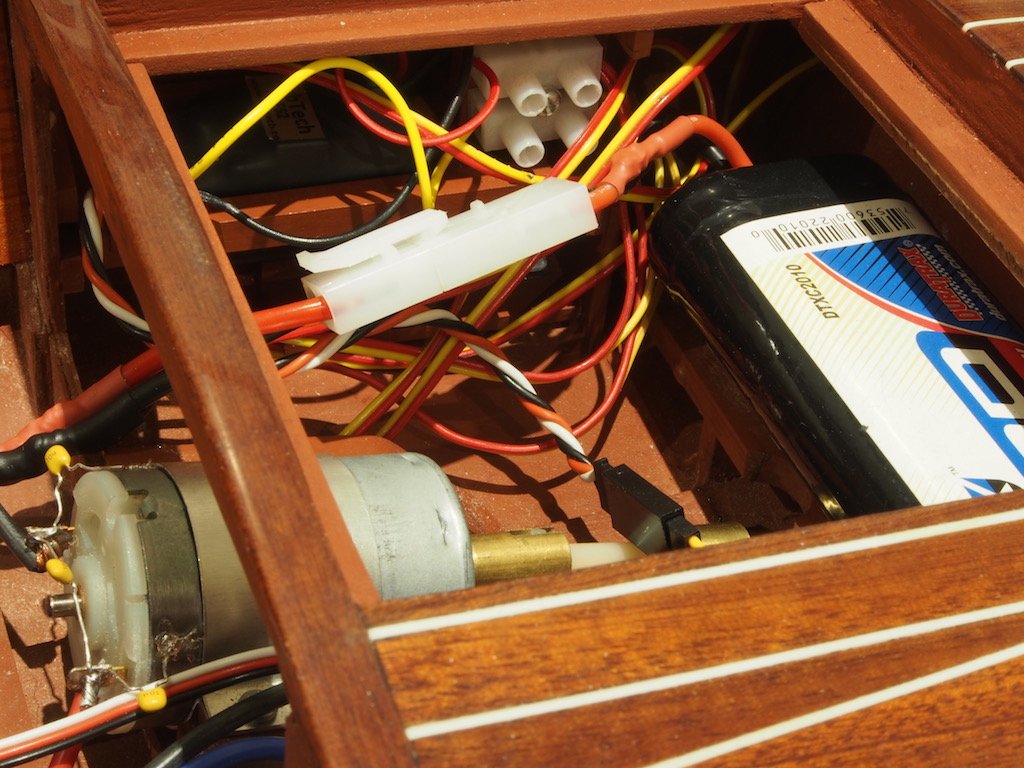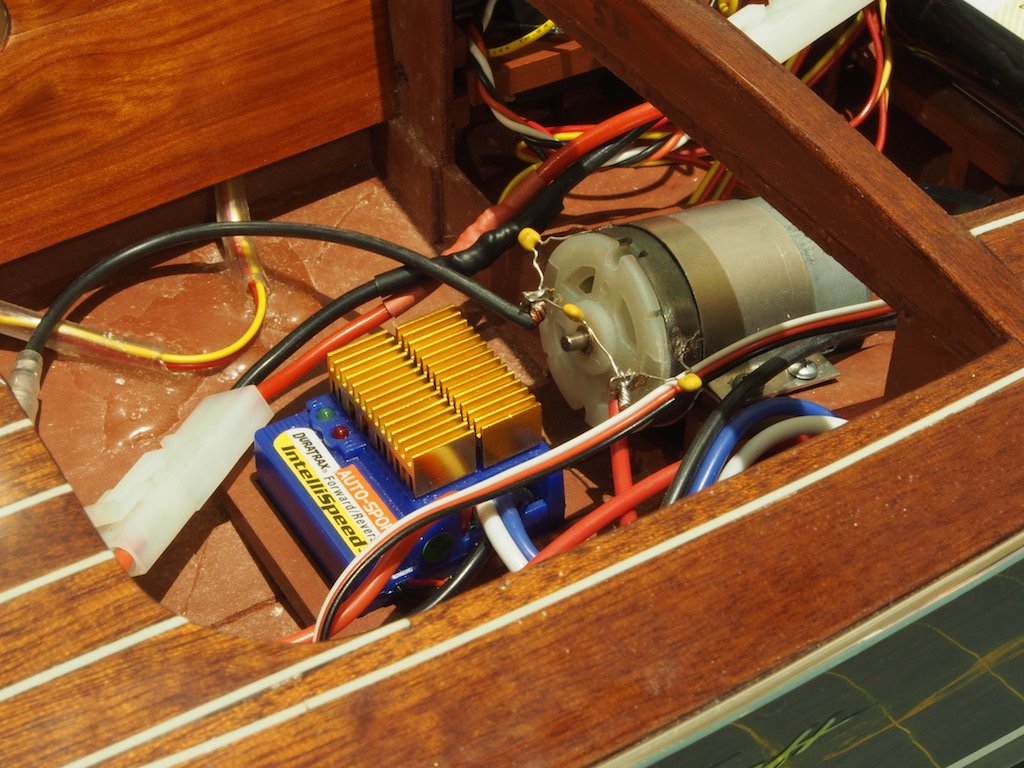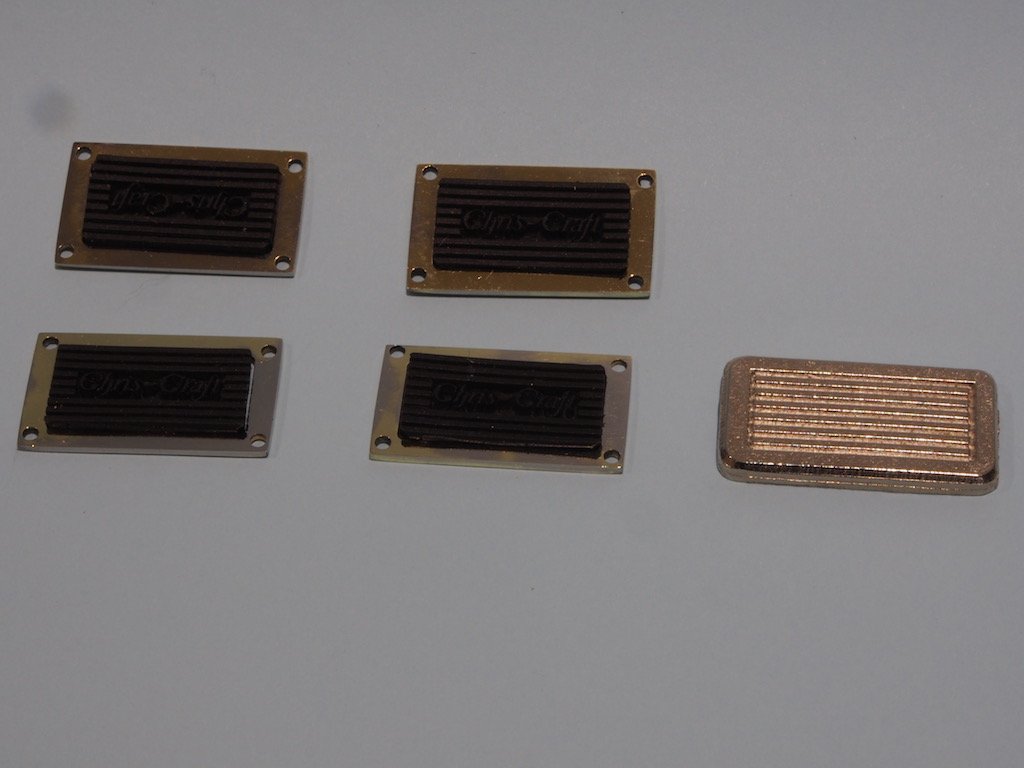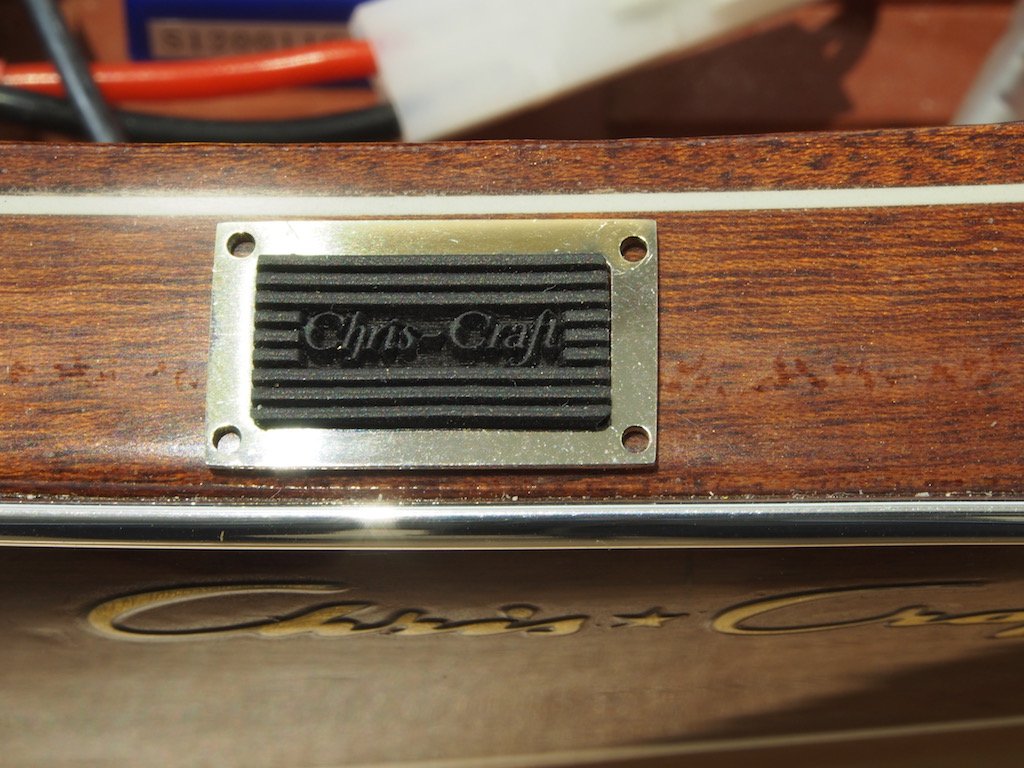-
Posts
4,880 -
Joined
-
Last visited
Content Type
Profiles
Forums
Gallery
Events
Everything posted by gjdale
-
Hey Mobbsie - nice to see you back here my friend, and thanks for the kind comments. 'bout time we saw some more sawdust from you ain't it? 😉
- 339 replies
-
- dumas
- Chris-Craft
-
(and 3 more)
Tagged with:
-
Thanks very much Slog, Bob, Don, Ken, Sjors and Mark, and all the "likes". I hope to take a short video when we do eventually get to sea trials.
- 339 replies
-
- dumas
- Chris-Craft
-
(and 3 more)
Tagged with:
-
Thanks very much Danny. Hadn't thought about the show. Hmmmmmmmm........ maybe..........
- 339 replies
-
- dumas
- Chris-Craft
-
(and 3 more)
Tagged with:
-
Thanks for all the kind comments and likes folks. It seems a long time since the last update, but progress has been steady with all of the final fittings. I re-made a number of the fittings: The Exhaust, Gas Cap, Rear Flag Pole Base, and Hatch Cover Handles. With all of these, the castings were useable, but the time and effort to clean up the flash and then polish and potentially re-plate them meant that it was easier to re-make them. All were made from brass and chrome plated on completion. I added some knurling to the lid of the Gas Cap just for some extra interest (and because I hadn’t used the knurling tool on my lathe yet). The Fwd and Aft Flagpoles were turned on the lathe from walnut stock, after first drilling them to receive lighting wires and/or brass locator pins. Another fairly straight forward exercise that posed no particular problems. Both the flagpoles have been made removable to provide some protection during transit to and from the lake. I had ordered some replacement cloth flags from BECC but was a little disappointed in the product when they arrived – they are only printed on one side. So I used the kit provided flags instead and the “client” is happy with these. Once the final soldering of the lighting wires was completed and tested, it was time to present the completed boat to the “client” for provisional acceptance. She was delighted with the final product. All that remains now is sea trials prior to final acceptance. Given that a successful float test has already been completed in the domestic testing facility, sea trials may need to wait until the weather warms up a bit as the manual recovery system says he doesn’t wasn’t to go swimming just yet! With that, I’m calling DONE! Here are a few glam shots of the final product.
- 339 replies
-
- dumas
- Chris-Craft
-
(and 3 more)
Tagged with:
-
Congratulations on completing your first build. You can be justifiably proud of a fine model - well done!
- 164 replies
-
- model shipways
- armed virginia sloop
-
(and 2 more)
Tagged with:
-
Sorry to hear you've been ill Mike, but glad to hear you're on the mend and will be back at the bench soon.
- 146 replies
-
- dumas
- Chris-Craft Commander Express
-
(and 2 more)
Tagged with:
-
Congratulations Nils on a stunning model. It has been a real joy to follow your progress for the last 2+ years. I look forward to following your next build.
- 2,625 replies
-
- kaiser wilhelm der grosse
- passenger steamer
-
(and 1 more)
Tagged with:
-
Mark, Sorry to hijack to your thread, but all this talk of Death Star and I couldn't resist.........
-
Thanks Hamilton and welcome to the build - never too late for this party! Another minor update of sorts. I had to re-visit the installation of the Engine Hatches as the hinge mounting failed. The hinges were initially epoxied to the hatches and then attached to the hatch frame with attachment tape (a type of double sided tape). The tape gave way, so I had to reconsider the whole setup. In the end, I made two shims from some scrap 3/64” thick Red-heart and epoxied these to the outboard side of the hinge flap. The shims were then epoxied to the hatch frame and held in place with map pins while the glue set. Once the pins were removed, I filled the holes with a few brass nails. Of course, the shims added just enough width to the hatch assemblies to prevent them from closing properly, so I then had to sand down the mating faces until the hatch would open and close properly. The photo below shows the completed “fix”, although touch up painting is still required. I was then able to drill the holes for the 000-120 screws, which were then individually epoxied in place…..all 130 of them. The heads of the screws were also aligned to the long axis of the trim piece, so that fore/aft trim pieces had screw heads aligned fore/aft, and athwartships trim pieces had screw heads aligned athwartships. It’s a little hard to see in the photo, but trust me…they are aligned! And here’s an overall shot for perspective:
- 339 replies
-
- dumas
- Chris-Craft
-
(and 3 more)
Tagged with:
-
Sorry to hear about your injury Hamilton - hope all goes well with recovery. Nice to see you back working on Bluenose.
-
Thanks Popeye, Good pick-up. Yes, it's a tight squeeze in there. I had to re-locate the position of the receiver on the port side so that the hatch stay cleared it as it went down. Starboard side is okay, but still tight.
- 339 replies
-
- dumas
- Chris-Craft
-
(and 3 more)
Tagged with:
-
Thanks Ragove and Sam, Sam - the hinges and stays came from MACK products (http://www.mackproductsrc.com) ; the screws are from Jim Morris company (https://jimorrisco.com).
- 339 replies
-
- dumas
- Chris-Craft
-
(and 3 more)
Tagged with:
-
Thanks again for the kind comments and all the "likes". A minor update today – the Engine Hatches have been installed. I diverted from the kit plans here. The kit provides for a single, one-piece hatch, that is to be removed for access to the engine compartment. I elected to make a two-piece hatch, hinged, as per the real boat. I also elected to make the trim pieces from stainless steel, rather than the sticky tape provided in the kit. The trim pieces have all been drilled to accept 000-120 screws, countersunk flush with the trim. I also installed two hatch stays to hold the hatches open just past 90-degress. For these, I used a product from MACK products. Here is a picture of the trim in place, ready for the screw shaft holes to be drilled. And this view shows the hatches in the open position, with the hatch stays visible at the forward end. Although not perfect, I am happy enough to call this experiment a success. Next up, drilling 130 holes to accept the 000-120 screws and epoxying them in place.
- 339 replies
-
- dumas
- Chris-Craft
-
(and 3 more)
Tagged with:
-
Thanks Wefalck, I mentioned the plating kit a couple of pages back when discussing the cutwater, but didn't post any details. Here is a link that will tell you more: http://www.caswellplating.com.au/plug_N_plate.html I am using "copy chrome", which is actually cobalt. The kit is inexpensive and works very welll. However, just as with blackening processes, preparation is the key to success. The parts must be highly polished first and absolutely clean. In the case of the step plates, I progressed through 15 grades of abrasive paper, from 120 to 12,000 grit to achieve a polished surface and then soaked them in acetone for 30 minutes before a final rinse in distilled water. After plating, they were dunked in distilled water again, and then buffed with a metal polish and a felt pad on a rotary tool.
- 339 replies
-
- dumas
- Chris-Craft
-
(and 3 more)
Tagged with:
-
Thanks for all the kind words and the "likes" folks. Now that we’ve proved that she floats, it was time to (semi) permanently install the electrics and test functionality. I had previously built some racks to hold some of the gear, but it is still a very tight fit in that engine bay! Anyway, first up – testing the lights. I temporarily attached the bow and stern lights and gave all controls a test – all good! Here’s a couple of close-up shots inside the engine bay. First the port side: And the starboard side: Although the motor/drive shaft and steering all worked, there was a considerable amount of radio interference from the motor, so I soldered in the three “optional” capacitors. That made a big difference. Here you can see them wired across the engine terminals: The next job was to make the frames for the foot step-pads. Way back at the beginning of the build, I had some rubber stamps made up to use as inserts for a metal frame, rather than using the kit-provided cast parts. I made these by milling out the centre of some 2mm thick brass strip and then polishing and chrome plating it. It might be only a small job, but it took me most of the weekend to do this. Here is an overview of the step plates with the kit part provided for reference. In my custom built ones you can see the Chris Craft logo in the rubber. And here is a shot with one temporarily placed on the boat: As you can see, I’ve also drilled these to take 000-120 mounting screws. Some time ago, I orderd a gross (144) of these, along with the the 00-90 screws used on the cutwater and stern fenders. I will use the 000-120 on both the step plates and the engine hatch trim, so I spent quite some time individually plating 144 very small brass screws. Then I had another look at the number of screws on my engine hatch trim pieces….. it seems that my design calls for a total of 130 screws around the hatch trim, and I need a further 16 for the four step plates……total 146…..leaving me two screws short, even assuming the carpet monster doesn’t steal it’s fair share of them. The worst part is, that the postage for these cost more than the screws did and I didn’t fancy paying the better part of AUD $100 for a few extra screws. A little digging on the internet turned up some stainless steel screws of the same size. Although the individual cost was higher, the package size offered was smaller, and the postage was only US $8.00 instead of US $40.00. I will hold off installing the step pads until the new screws arrive, just in case they look slightly different. I’ll use the existing bundle to install the hatch trims – coming up next.
- 339 replies
-
- dumas
- Chris-Craft
-
(and 3 more)
Tagged with:
-
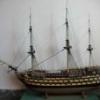
Recommendations For A Good Milling Machine
gjdale replied to Thistle17's topic in Modeling tools and Workshop Equipment
Sherline also offers a 10,000 rpm pulley set for about US$80, so higher speeds for wood and small diameter cutters are no problem. The "standard" pulley set runs at speeds up to 2,800 rpm. The upgrade set is very easy to install. -
Congratulations on completing a fine build Kevin. If this was to "teach myself airbrushing", you seem to have mastered it very well indeed.
-

Recommendations For A Good Milling Machine
gjdale replied to Thistle17's topic in Modeling tools and Workshop Equipment
I'll add my vote for the Sherline. A quality machine that is reasonably priced and with a huge range of accessories. And remember, "quality is remembered long after price is forgotten". A quality tool is a joy to use and I find great enjoyment every time I use my Sherline. -
I see no starved cows here Slog - only well nourished ones! Great job. Looking forward to more progress.
- 244 replies
-
- borodino
- dom bumagi
-
(and 1 more)
Tagged with:
-
Congratulations on completing a fine build Gary. You can be justifiably proud of this - a really significant achievement!
- 85 replies
-
- finished
- caldercraft
-
(and 1 more)
Tagged with:
About us
Modelshipworld - Advancing Ship Modeling through Research
SSL Secured
Your security is important for us so this Website is SSL-Secured
NRG Mailing Address
Nautical Research Guild
237 South Lincoln Street
Westmont IL, 60559-1917
Model Ship World ® and the MSW logo are Registered Trademarks, and belong to the Nautical Research Guild (United States Patent and Trademark Office: No. 6,929,264 & No. 6,929,274, registered Dec. 20, 2022)
Helpful Links
About the NRG
If you enjoy building ship models that are historically accurate as well as beautiful, then The Nautical Research Guild (NRG) is just right for you.
The Guild is a non-profit educational organization whose mission is to “Advance Ship Modeling Through Research”. We provide support to our members in their efforts to raise the quality of their model ships.
The Nautical Research Guild has published our world-renowned quarterly magazine, The Nautical Research Journal, since 1955. The pages of the Journal are full of articles by accomplished ship modelers who show you how they create those exquisite details on their models, and by maritime historians who show you the correct details to build. The Journal is available in both print and digital editions. Go to the NRG web site (www.thenrg.org) to download a complimentary digital copy of the Journal. The NRG also publishes plan sets, books and compilations of back issues of the Journal and the former Ships in Scale and Model Ship Builder magazines.



